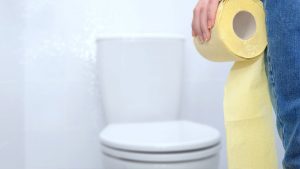Constipation in children
Constipation means that stools are hard and dry, passing is difficult or painful and less frequent than usual. It is a common problem for children, but it is usually temporary and there is no reason for parents to worry.
A child is more likely to become constipated when they don’t eat enough fiber, drink enough fluids or exercise enough. It also happens when children ignore the need to have a bowel movement, which usually happens out of embarrassment to use a public toilet, or out of fear or lack of confidence when a parent is away, or an unwillingness to take a break from play. Also, sometimes constipation is caused by medication or an illness.
The symptoms of constipation are:
- No bowel movements for several days or hard and dry daily bowel movements
- Abdominal cramps and pain
- Nausea
- Vomiting
- Feces like clay in the child’s underwear, which means that the stool is trapped in the rectum
Constipation is likely to make defecation painful, so the child tries to prevent it. Signs that should trigger parents that their child is trying to prevent a bowel movement are tightening of the buttocks, shaking the legs up and down and a red face.
Treatment depends on the age of the child and the severity of the problem. Often the problem is solved by eating more fiber (fruit, vegetables, whole grains), drinking more fluids and doing more exercise. Sometimes, a child may need an enema to remove stools or a laxative to soften them and prevent a future episode of constipation. However, laxatives can be dangerous for children and should only be given with the approval of a medical specialist.
Although constipation is usually harmless, it can be a sign or cause of a more serious problem. For this reason, parents should take their child to see a doctor in the following cases:
- Episodes of constipation last longer than 3 weeks
- The child is unable to participate in normal activities for more than three weeks or more.
- The child is unable to participate in activities for more than three weeks or more
- A small mass of the intestinal lining is pushed out of the anus (hemorrhoids)
- Normal pushing is not enough to remove the stool
- There are wet or soft stool leaks out of the anus

